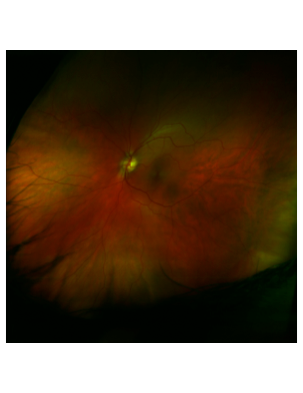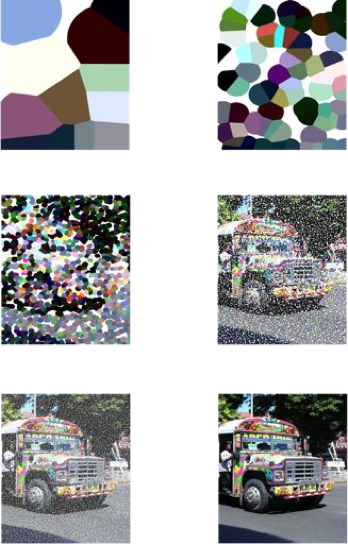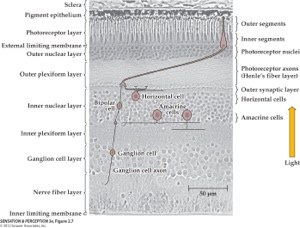Retinal resolution
Each of the millions of photoreceptors in the retina measures the number of light particles - photons - it has absorbed. This is a ‘sample’, or estimate, of the amount of light coming from a particular location in a scene. The more of these samples we have, the more detail can be captured. This number of samples is referred to as ‘resolution’: the more samples, the higher the resolution. This is equivalent to the measurement on digital cameras: a 5 megapixel resolution camera is making 5 million measurements (samples) of the scene you are taking a picture of.
On the right here is a representation of what a particular scene might look like if you had the number of photoreceptors listed under the picture:
(just a sidenote going back to our discussion of the anatomy of the retina, don’t forget about all the retinal structures (‘collector cells’, blood supply) that sit *on top* of the photoreceptors, blocking some of the light getting to them:
14. the retina
1:28 PM
Just as with a magapixel count in a camera, the number of light-sensitive elements that are in the eye (the photoreceptors) will determine how detailed the visual images will be.
approx. 10 samples
approx. 100 samples
approx. 10,000 samples
approx. 1,000,000 samples
approx. 100,000 samples
approx. 1000 samples




